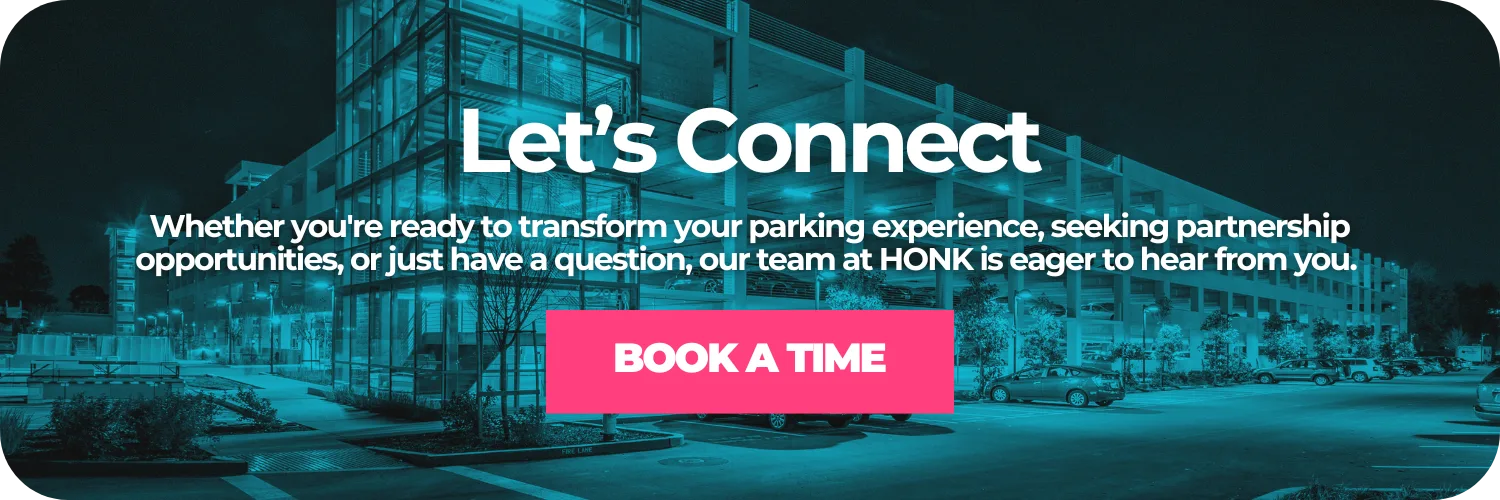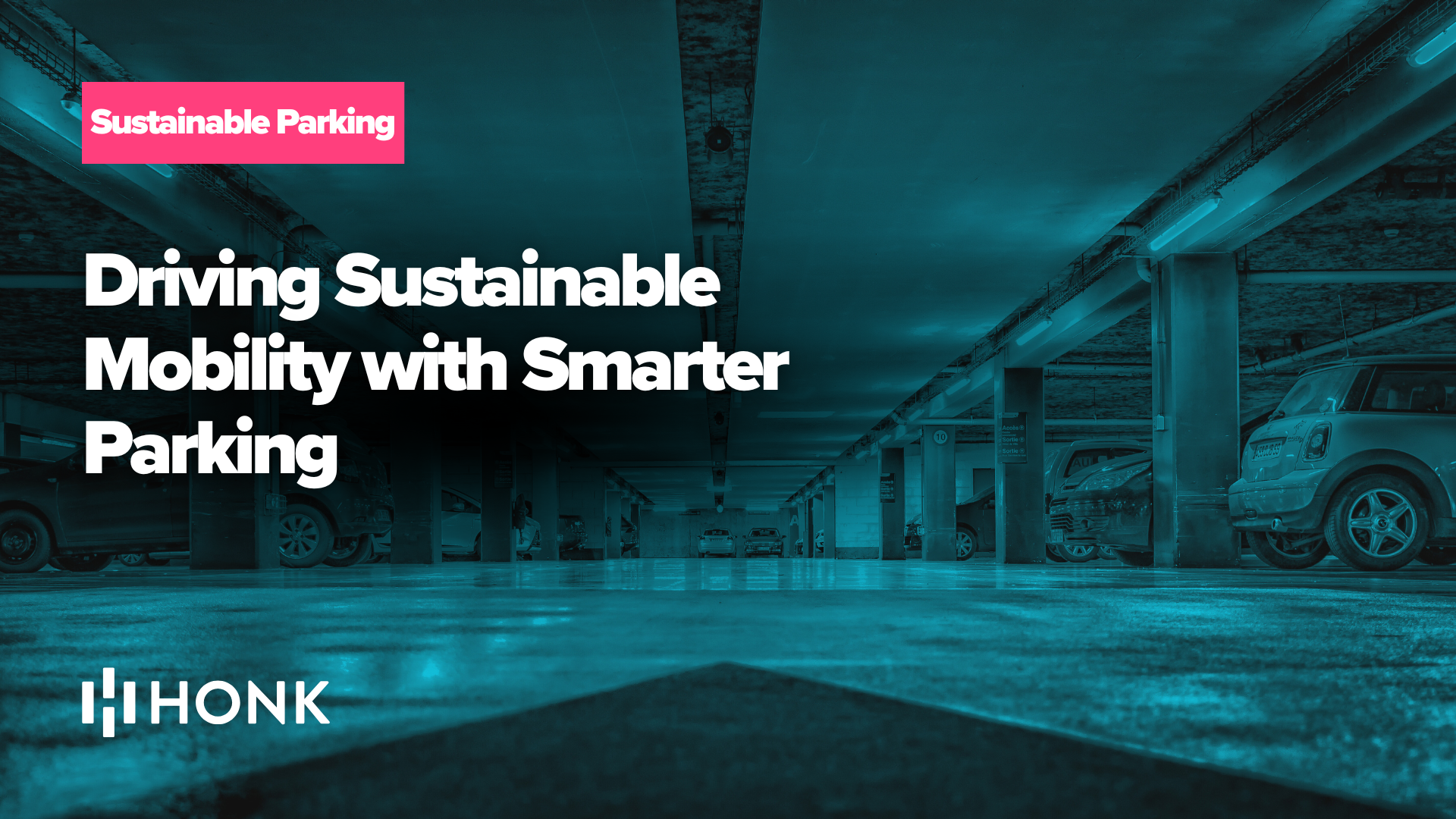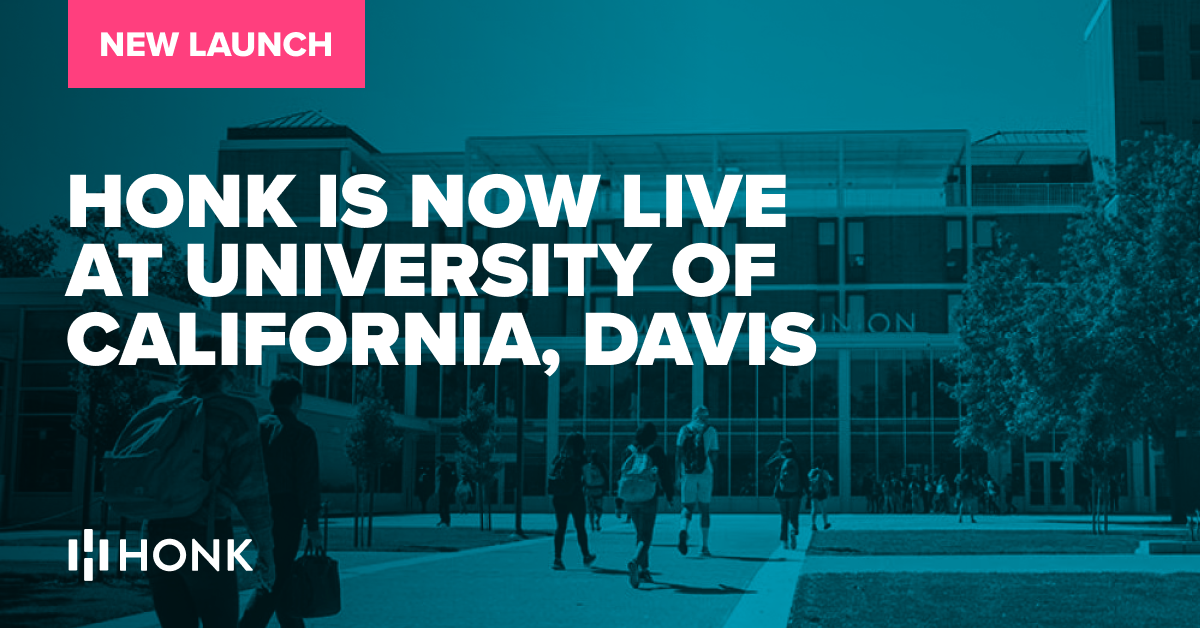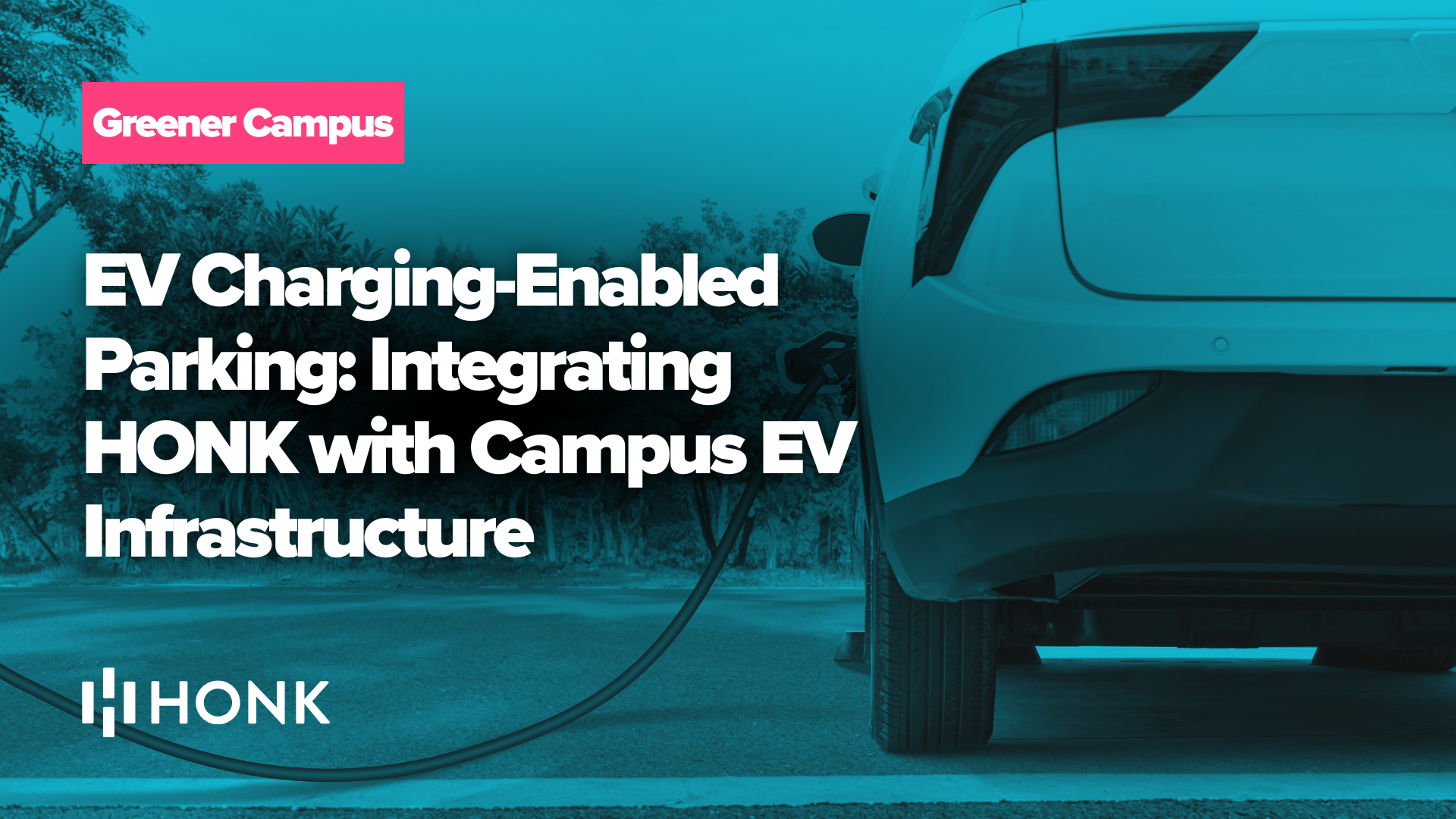Ask anyone about parking and you’ll hear a story. Maybe it’s about circling a crowded downtown lot, maybe it’s the sting of an unexpected ticket, maybe it’s the relief of finding a spot quickly when running late. Parking is more than a background task; it’s an emotional experience.
When new parking systems are introduced—whether it’s mobile payments, digital permits, or contactless validation—those experiences are disrupted. And disruption often brings frustration, hesitation, or resistance. Operators can roll out the best technology in the world, but if people don’t adapt to it, adoption stalls.
At HONK, we’ve seen this pattern play out across universities, municipalities, retailers, and private operators. The difference between smooth adoption and rocky rollouts almost always comes down to psychology: how drivers think, how they react to change, and what nudges them toward new habits.
This post digs into the psychology of parking behavior, the ways drivers adapt to new systems, and the design strategies that create compliance and satisfaction. It’s long because it’s important—changing human behavior always is.
Why psychology matters in parking
Parking operators sometimes focus so much on infrastructure and enforcement that they forget the human side. But psychology isn’t a nice-to-have; it’s essential.
When behavioral change isn’t taken into account, operators run into predictable problems:
- Low compliance because drivers avoid or ignore new systems
- High complaint volume and negative reviews
- Rising enforcement costs
- Lost revenue from missed payments or abandoned lots
On the other hand, when systems are designed with drivers in mind, the benefits are immediate:
- Higher compliance rates
- Happier drivers who come back again
- Less strain on enforcement teams
- Steady, optimized revenue
Technology doesn’t drive adoption. People do. And people need more than instructions; they need systems that fit how they think and behave.
How drivers make parking decisions
Every decision about parking—where to stop, whether to pay, how long to stay—is shaped by habits, perceptions, and trade-offs. Here are some of the biggest behavioral factors that come into play:
- Friction: The harder something is, the less likely people are to do it. A long kiosk line or clunky payment app increases the chance of skipped payments.
- Loss aversion: People dislike change and often stick with familiar habits, even if new options are objectively better.
- Fairness: If drivers believe rules are inconsistent or fees aren’t justified, they resist compliance.
- Defaults and nudges: Suggested durations, reminders, and easy extensions influence behavior quietly but effectively.
- Rewards versus punishment: Positive incentives like validation or loyalty perks are more effective than relying on fines alone.
- Social norms: If most people in a lot use a digital app, others will feel pressure to do the same.
Understanding these principles is the first step in designing systems drivers actually use.
The stages of adaptation
Adapting to new parking systems is rarely instant. Instead, drivers typically move through four stages:
- Resistance. The first reaction is often negative: “Why did they change it?” or “This seems complicated.”
- Trial and error. Drivers experiment, make mistakes, ask questions, and get used to the basics.
- Acceptance. Familiarity builds. People see the benefits—faster payments, fewer tickets, more flexibility.
- Habit. The new behavior becomes second nature. Drivers scan, pay, and extend sessions without a second thought.
The goal is to shorten the resistance phase and help drivers move toward habit quickly. That’s where thoughtful design and communication matter.
Reducing friction
Nothing kills compliance faster than friction. If paying for parking takes too long or feels complicated, people will avoid it. That’s why offering multiple ways to pay—app, QR code, text-to-pay—is critical.
Universities that rolled out HONK’s contactless options saw adoption soar. Students could pay by phone in seconds, without waiting in kiosk lines. More details are in Campus Parking Goes Digital: The Impact of Contactless Parking Technology at Universities.
The same applies to transaction speed. Scan-to-pay can cut the process to under 30 seconds, which not only improves compliance but also increases turnover in busy lots. That dynamic is explained in The Power of Parking Turnover: How Digital Payments Increase Spot Availability.
Communicating clearly
Confusion is the enemy of compliance. Drivers who don’t understand the process won’t follow it.
That’s why signage must be simple, visible, and unambiguous. Instructions should appear where drivers make decisions—at entry points, near meters, along walkways.
Successful operators also pair system launches with communication campaigns: emails to residents, flyers for students, in-lot posters, and FAQs online. Education reduces resistance. HONK outlines this strategy in How to Launch a Digital Parking Program in 30 Days or Less.
Using positive incentives
People are far more motivated by rewards than by the threat of punishment. Operators who add perks see better compliance than those who rely only on tickets.
Options include loyalty programs, free parking hours for frequent users, retail partnerships that validate parking, or promotional pricing during the rollout period.
Retail and hospitality operators have found validation especially effective. Shoppers feel their parking is valued and are more likely to comply. This approach is covered in Validating Parking, Validating Loyalty: Modern Parking Validation in Retail & Hospitality.
Nudging with smart defaults
Sometimes drivers just need a nudge. Reminders that a session is expiring, suggested durations at purchase, and one-click extensions are small touches that prevent overstays and frustration.
HONK’s platform is built with these nudges in mind. They don’t feel like enforcement—they feel like help. That difference matters when building trust with drivers.
Making fairness visible
Drivers are more likely to pay when they feel the rules are fair. That means transparent pricing, clear communication about rate structures, and consistent enforcement.
License plate recognition (LPR) tools help by ensuring enforcement is uniform, reducing the perception that some drivers can “get away with it.” When everyone plays by the same rules, compliance rises.
Explaining how revenue is used can also help. If drivers know fees support infrastructure, transit, or community improvements, they see value in their payment.
Learning from the data
Psychology isn’t static. How people behave in the first month of a rollout may differ from month six. That’s why operators need to monitor data continuously:
- Compliance rates
- Average transaction times
- Channel usage (app vs. QR vs. text)
- Violation rates
- Customer feedback
HONK’s dashboards make it easy to track these metrics and adjust accordingly. Operators can A/B test signage, tweak pricing, or change reminder intervals to see what works best. That iterative approach is explained in Parking Revenue Optimization 101: Smart Parking Solutions for Higher ROI.
Real-world examples
Universities using HONK reported fewer disputes when students could extend sessions remotely. Compliance rose because the system aligned with student behavior—pay once, get a reminder, extend as needed.
Retail lots with digital validation saw higher turnover and happier customers. Shoppers didn’t resent the fees because they felt rewarded for visiting.
Municipalities adopting scan-to-pay noted reductions in congestion and enforcement costs. Drivers found the process easier, which reduced pushback.
The lesson across these examples is consistent: when systems reflect how people actually behave, adoption accelerates.
A checklist for operators
Here’s a quick reference for anyone planning a new system rollout:
- Offer multiple ways to pay
- Walk through the driver journey and remove points of friction
- Make signage clear and visible
- Provide reminders and easy extensions
- Add positive incentives like validation or loyalty perks
- Be transparent with pricing
- Enforce consistently
- Track data and iterate
These aren’t just best practices—they’re necessities for shaping behavior effectively.
Avoiding common pitfalls
Even with strong design, some pitfalls can derail adoption. Here are a few to watch for:
- Launching too many changes at once. Phasing new features helps people adjust.
- Overcomplicated signage. Drivers should be able to understand the process at a glance.
- Lack of support. During rollout, staff should be available to answer questions and guide drivers.
- Ignoring less tech-savvy users. Not everyone wants to download an app. QR and text options expand accessibility.
- Poor handling of glitches. Transparency and quick fixes build trust when hiccups occur.
The HONK difference
HONK’s platform is built with psychology at its core. Multiple payment channels reduce friction. Scan-to-pay and text-to-pay options keep the process fast. Reminders and extensions prevent accidental overstays. Validation and loyalty integrations reward positive behavior. Analytics dashboards help operators adapt quickly.
Case after case shows the results: higher compliance, happier drivers, and stronger revenue. But beyond metrics, HONK helps operators build systems that people actually like to use.
Closing thoughts
Parking is a human experience before it’s a technical one. Operators who focus on drivers’ behavior—how they think, what frustrates them, what motivates them—see better outcomes than those who focus only on infrastructure and enforcement.
Behavioral change takes time, but with the right design and communication, drivers adapt faster and satisfaction grows. The next time you think about a new parking system, remember: you’re not just installing technology. You’re changing habits.
If you’re planning a parking upgrade or launch, HONK can help you do it with people in mind. Request a Demo and see how simple, fair, and driver-friendly parking can be.





